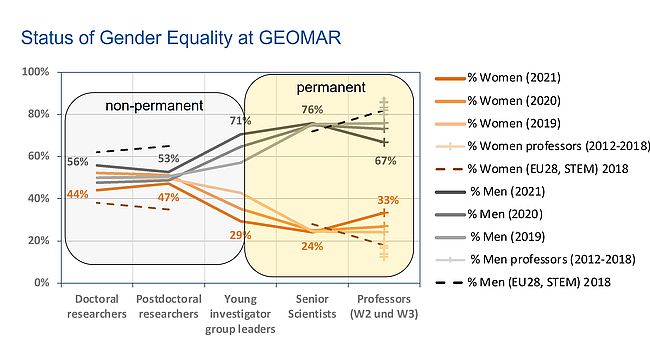Status Quo of Women in German Research Facilities
“The insufficient participation of women causes lack of efficiency and excellence for the higher education sector, as the potential for innovation in science and research can only fully unfurl when outstanding talents - regardless of their gender - remain in science, on their road to full performance and do not migrate into other areas of employment. Men and women at all levels of scientific knowledge process have to be involved equally.” (German Research Council, Research-oriented equal opportunity standards, 08.08.2008)
Still, women at universities and non-university research facilities are strongly underrepresented in scientific and administrative leading positions.
Nationwide, the number of female full university professors in 2018/2019 was 24.7% (C2 = 25,7%, W1 = 46,6%, C3/W2 = 25,5% und C4/W3 =20,5%). The proportion of temporary and part time employed females is disproportionally high. In non-unversity reaserach facilities females make up 42,9% of the W1-professorships but only 28,7% of the C3/W2 and 17,1% of the C4/W3-professorships. Source: "Chancengleichheit in Wissenschaft und Forschung, 24. Fortschreibung des Datenmatrials (2018/2019) zu Frauen in Hochschulen und außerhochschulischen Forschungseinrichtungen" von der GWK
The inauguration of the so-called cascade model, which pursues a consistent, equal women quota in each hierarchy level, shall countervail these facts.
Therefore, it is necessary to create general conditions in the future that enable women and men likewise to pursue career paths and thereby turn German research competitive in the international setting.
Initial Situation at GEOMAR
Currently, GEOMAR has a balanced gender ratio in the career levels of PhD, non-permanent postdoctoral researchers (postdocs). As in other science institutions and universities, this percentage decreases significantly in permanent positions of researchers (24%) and W2/W3 professors (33%) (Status: 12.2021).



